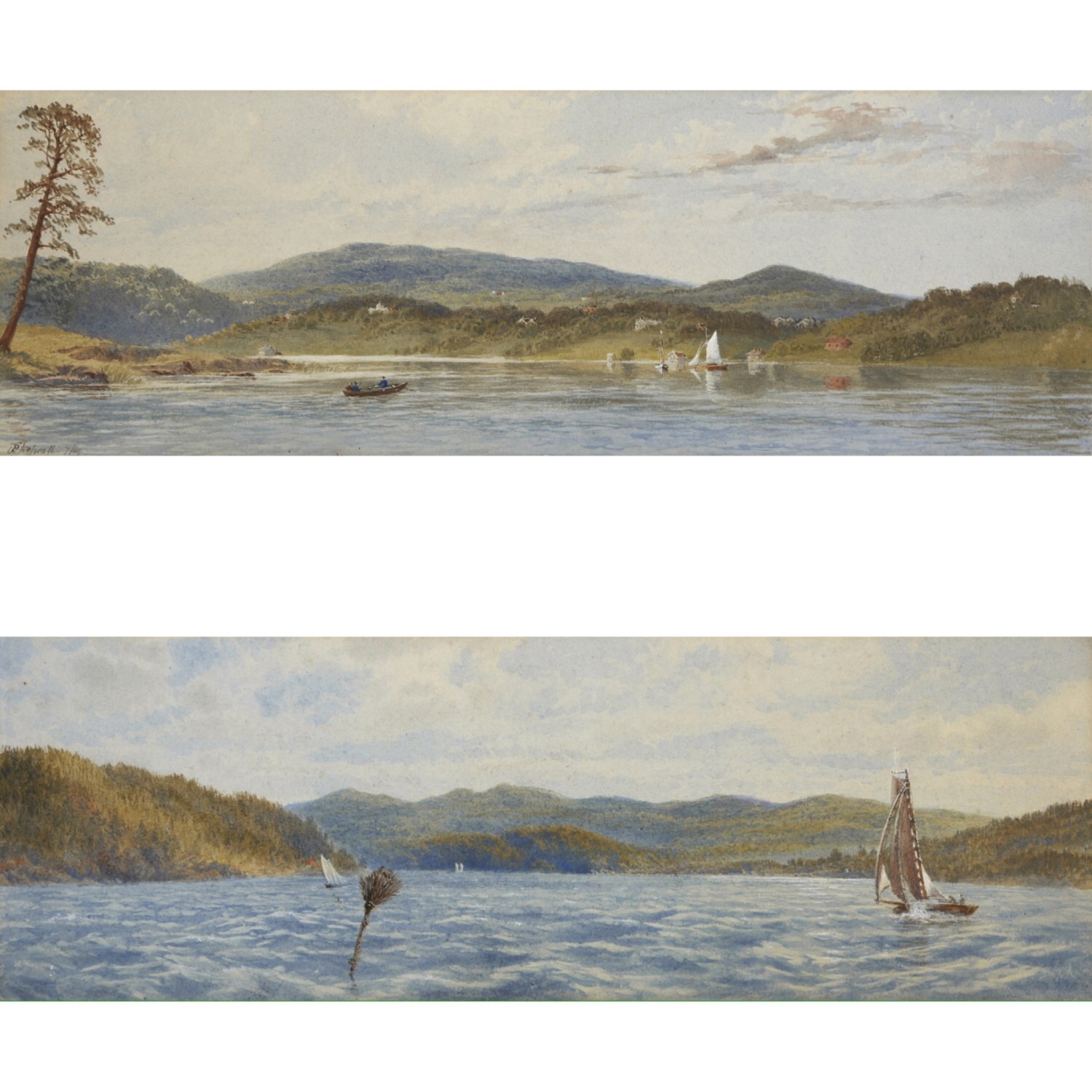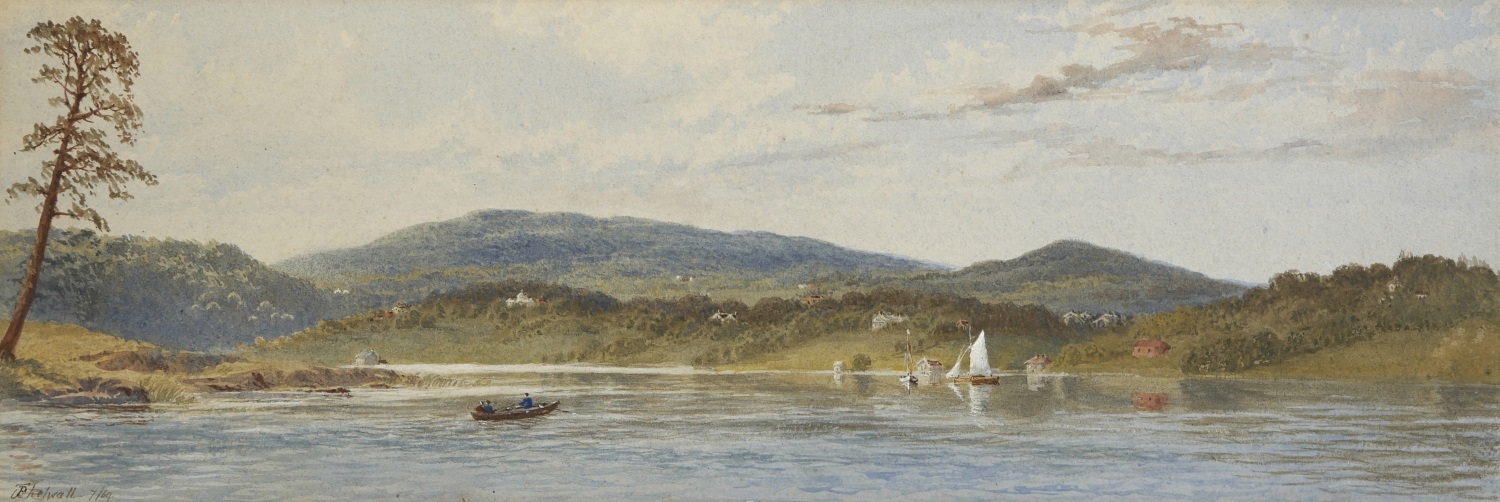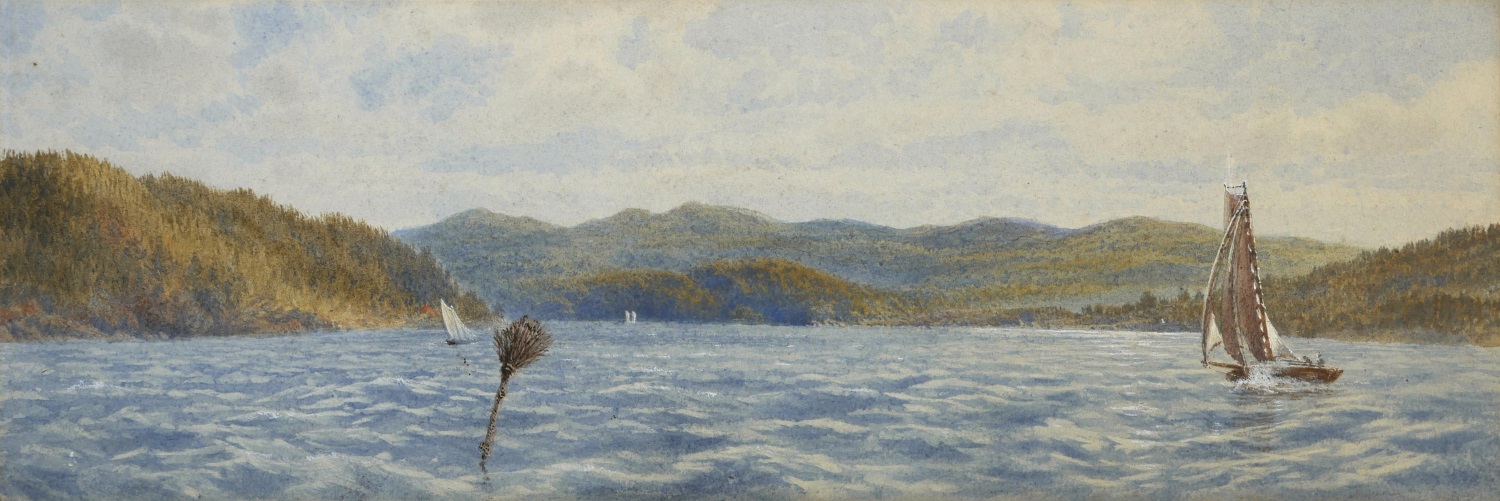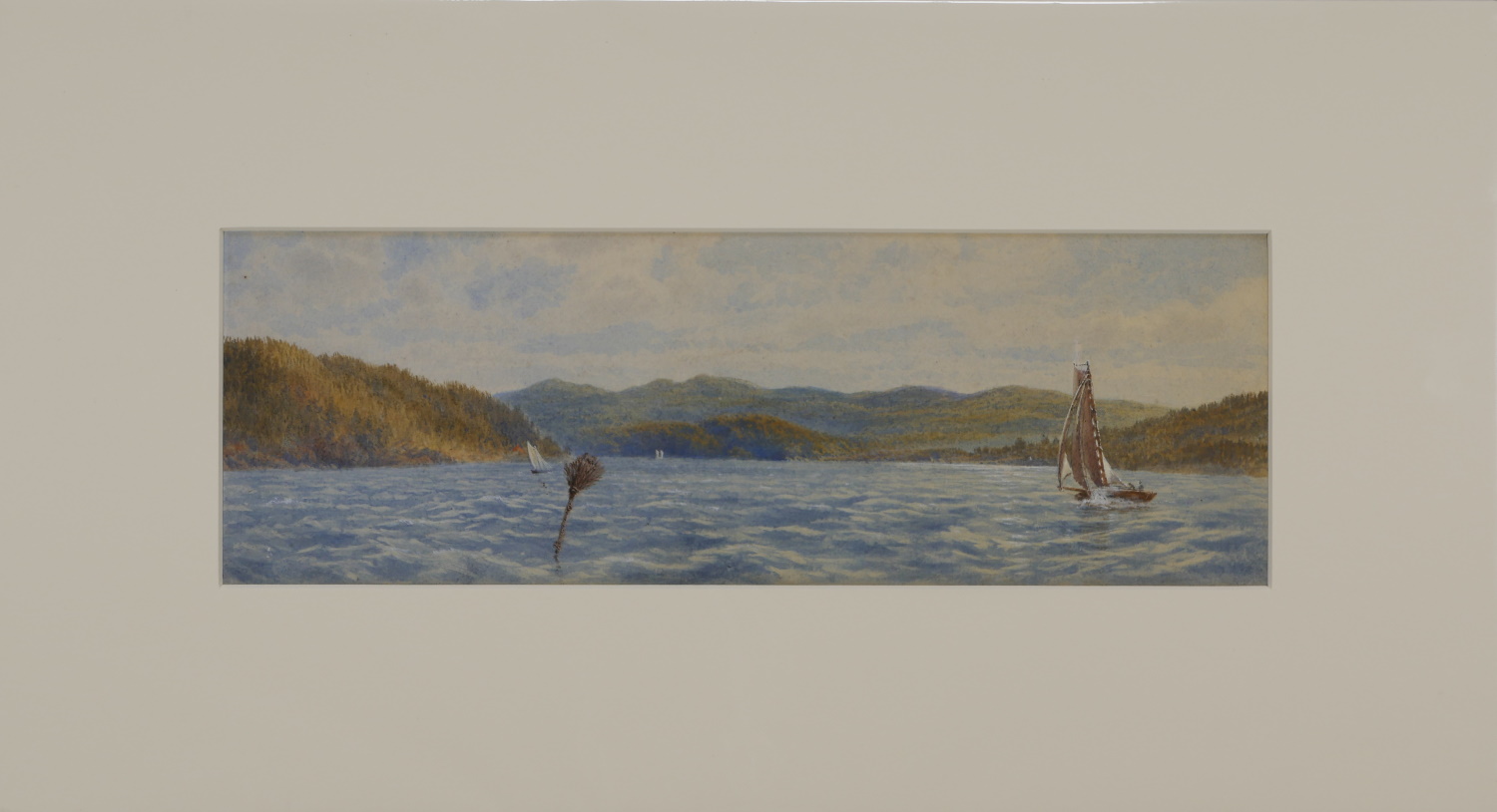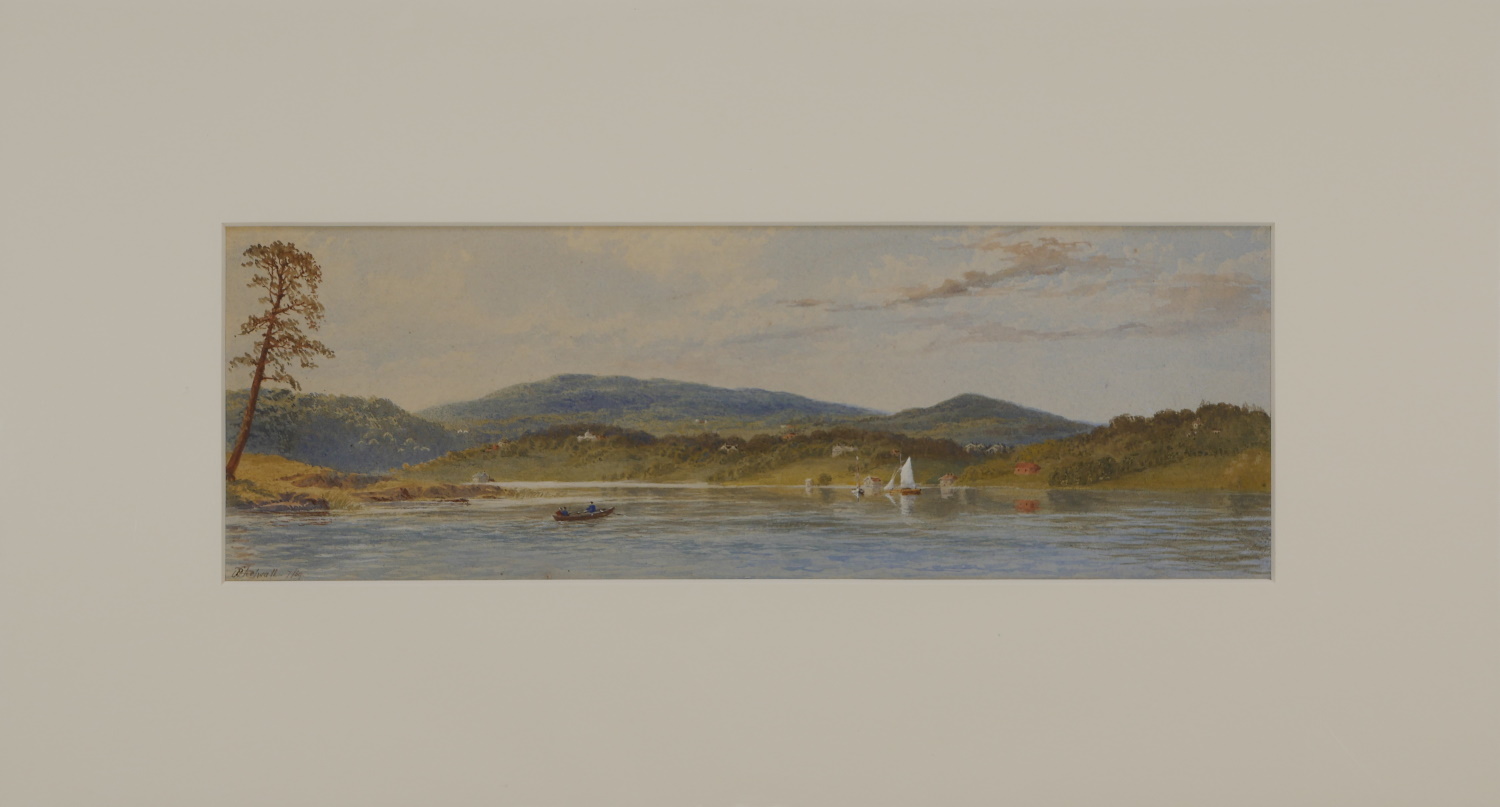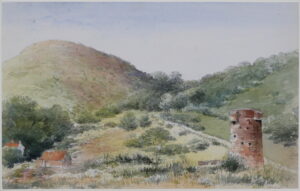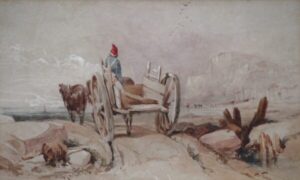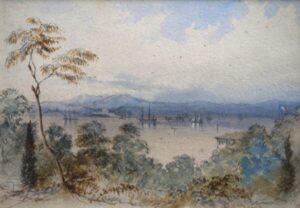Thelwall, Weymouth Birkbeck (1831-1878)
“A Son of John Thelwall”: Weymouth Birkbeck Thelwall’s Romantic Inheritance
Patty O’Boyle
Independent Scholar
1. A delighted John Thelwall wrote to his daughter Sara, on August 4, 1831, on the birth of his son Weymouth Birkbeck, who seems almost to have attempted to catch up with his father before he was an hour old. As if fated to live at the same breathless, belated pace, Weymouth went on to recapitulate his father’s eccentric career and talents, inheriting his gift of oratory, realizing his thwarted artistic and theatrical ambitions, and setting forth on even more bizarre adventures in amorous, peripatetic and scientific discovery. His very life span ironically mirrors the forty-six years preceding his birth that had taken John Thelwall from an abandoned career in law to his trial for treason in 1794, and to the brink of success in realising his long deferred political hopes in the Great Reform Bill of 1832. Forty-six years years later the new life so joyfully announced in 1831 was to end in an unmarked “white man’s grave,” archetypal symbol of the folly of imperialist ambitions that the elder Thelwall had rejected, along with the often bigoted religious institutions that partly inspired them. Victim of his own romantic radical inheritance, Weymouth Thelwall was swallowed by the heart of darkness it led him into.
2. Sixty-seven years old at Weymouth’s birth, John Thelwall may have felt himself an “old fool,” but he was still an enthusiastic political agitator and orator. In the letter announcing the birth, he informs Sara that “alternations of public exertions, a little tuition and much propensity to enjoy the long forbidden charm of quiet study” have preoccupied him over the previous weeks. Those public exertions included his work as a leader of the St. Mary le Bone and St. Pancras parish committee, in support of the Political Union of the Working Classes. The following October he was to play an important role in the successful organisation of a huge procession of the union’s members, involving tens of thousands of disaffected supporters of the first Reform Bill from all the parishes in London who marched through the city in protest at its defeat by the House of Lords. One of the reforms Thelwall had supported as early as 1795, the religious and political emancipation of Irish Catholics, had just been achieved through the passing of the Catholic Emancipation Bill of 1829, though it was bitterly contested by other denominations and Irish protestants. Here the personal and the political were once more to meet in John Thelwall’s life and affect the lives of the son whose nativity he heralds and of his Catholic mother Cecil, whose father had been Irish. It is almost as if the act itself had opened the way for his son to be born and enter civic life at least partly unhindered by the repressive Test Acts and other such legislation that had trammelled and harried his father’s radical generation. For, perhaps surprisingly, Weymouth was brought up as a Catholic.
3. The religious toleration that had always marked the work of John Thelwall (catholic in the sense of liberal and broad-minded) would shape the lives of his sons in very different ways. Though there is little evidence that he ever converted, his marriage to Henrietta Cecil Boyle in 1817 indicates a softening in his earlier staunch atheism. Perhaps in deference to her religious freedom, the wedding at St. James Westminster was preceded by the baptism of the five surviving children of his first marriage: Algernon Sydney, John Hampden, Manon Roland, Sara Maria and Edwin Northumbrian. His eldest sons, both of whom went on to take orders in the Anglican Church, show very different sides of the “Thelwall” personality. In 1831 Hampden had just begun a life of rural “poverty and seclusion personified” as the charitable Rector of Oving in Buckinghamshire; his older brother Algernon was a militant evangelist who had recently returned from trying to convert the Jews of Amsterdam. While Hampden’s quiet social conscience found an outlet in supplying the poor lace-makers of his village with materials and markets, and teaching their children to read, Algernon’s outspoken activism expressed itself in polemical tracts against Catholics and almost any dissenting Church that did not acknowledge the Trinity. As paid secretary of the Trinitarian Bible Society (TBS) formed in 1831, he engaged in a pamphlet war against the editor of The Christian Observer, a supporter of the long-established British and Foreign Bible Society—a battle of words which rivalled any his father had fought. Even years after John Thelwall’s death his opponents were still calling his respectability in doubt. Algernon summons up the ghost of his own father by calling his well-known antagonist’s anonymity a “questionable shape”—a borrowing from Hamlet that his father had used in his arguments against Burke. He is countered by the editor, Samuel Charles Wilkes, sneeringly referring to “sonorous vocables” and “oratorical vocabulary” to discredit the son by raising the same ghost; and by his lamenting the TBS’s lack of “fatherly authority” in not having bishops on its committee but having as its paid secretary “a son of John Thelwall”. Curiously, the President of the TBS was the judge Thomas Erskine, son of the very barrister who had so ably defended John Thelwall at his trial in 1794. One of the main charges against Algernon was that he spent more of the subscribers’ money on polemical pamphlets than on printing Bibles for the lost souls of Britain. The implied objection to him, however, was quite obviously that he was simply “a son of John Thelwall.” He had inherited all his father’s pugnacious spirit, without any of his redeeming humour and toleration.
4. Growing up in the Church that his stepbrother so fiercely attacked, Weymouth Thelwall’s nature combined Algernon’s restlessness and Hampden’s practicality with the many-minded creativity of their common sire. Only three years old when his father died, he and his mother were left almost destitute, dependent upon Hampden and other relatives and friends. One of these, probably a Catholic, appears to have paid for the boy’s education at Stonyhurst, a highly regarded Jesuit boarding school in Lancashire that provided a route by which the sons of well-to-do Catholics, who were still excluded from Oxford and Cambridge, could get into London University or the Civil Service.
5. The little we know of Weymouth’s schooldays comes from the drama critic Percy Hetherington Fitzgerald in his Stonyhurst Memories; or, Six Years at School (1895). He was one of only a half-dozen boys Fitzgerald considered worth noting as “characters.” Like his father, Weymouth was a good actor, an accomplished artist, and something of a democratic orator:
And what odd types there were! Such was Thelwall, son of the great Radical agitator and elocutionist, the friend of Charles Lamb. There was a son of Thelwall’s “speaker” and I must say he inherited the parental gift and could declaim with great tragic feeling. I remember his spending weeks carving a Roman head on a piece of stone with a penknife, and a clever performance it was.
More ominously in the light of later events, Weymouth was also the “money taker” for bets made on the students’ cricket matches, one of which was the cause of a rift between Fitzgerald and Thelwall when a school-wide political feud was running based on divisions of loyalty during the land league agitation.
6. Upon his departure from Stonyhurst in 1847-48, Weymouth Thelwall immediately joined the Foreign Office. In 1859, whilst working as a clerk in the War Office, he married Marian Wrather, firstly in a Catholic and then in an Anglican Church; and a daughter, Edith Fanny Thelwall, was born in 1862. By October 1864, though, Weymouth had declared himself bankrupt in his own petition, with debts of between two and three thousand pounds owed mostly in bills. This was possibly through gambling, sign of a reckless streak that would contribute to Weymouth’s unfortunate fate. After he promised he would pay his creditors whatever remained above £200 of his £375 salary, including his annual increase, the judge accepted this “very creditable” offer and made an order of discharge. He is cited as living in Keppel Terrace, Windsor, at this time. As a bankrupt there was little possibility that he could remain in the civil service without the support of his superior officers, and it is likely that he had been dismissed, leaving him with no means of support for his wife and child.
7. Weymouth’s misfortunes were compounded by the death of his mother, announced in The Gentleman’s Magazine in 1865:
At Windsor in great distress, Mrs Thelwall, widow of John Thelwall, so well known for the part he took in the political struggles at the end of the last century, and who was tried for high treason and acquitted.
Her death occurred in February, just two months after Weymouth’s bankruptcy hearing, in a squalid little backstreet, Grove Place, where the cost of unfurnished rooms was in the order of four shillings a week. This was a huge step down for the beautiful and talented woman who had once welcomed London literati to Thelwall’s gracious house in Lincoln’s Inn Fields, boasting “a capital grand piano,” fine paintings and prints, a library of over six thousand books and quality mahogany furniture, all of which, along with the valuable lease, had been put up for auction in 1820. Cecil’s death certificate, signed by Weymouth, states that she died “of general decay,” which perhaps makes her obituary an indictment of those who had declined to offer a pension to John Thelwall in later life, when the fruits of the reform movement’s early struggles were beginning to be enjoyed by those who had often resisted them, including those who had caused Weymouth to be dismissed.
8. Yet with the rakish resilience of Thelwall’s genius, Incubus, in his play The Fairy of the Lake, Weymouth emulated his father’s capacity for regeneration through vocational (and amorous) reinvention. In 1871, the former war-office clerk reappeared in London as a landscape artist, aged forty, living in Westminster; and, according to the census record, his “wife” was a woman called Helena, birthplace not known, twenty-four years old and a dancer. It is uncanny how Weymouth’s mid-life behaviour mirrored that of his father. At the age of forty-two, John Thelwall had returned to London after an eight-year exile, having transformed himself from a political lecturer into an elocutionist; and ten years later he too took up with a much younger woman, an actress (though, unlike his son, John waited until his first wife was dead before he remarried). As a painter of landscapes, Weymouth resurrected the thwarted ambitions of his father, gaining success, respect and even a measure of fame thereby, for his water colours were exhibited at the Royal Academy, and he even appeared at court, where he presented “drawings and sketches” of Norway to the Queen in 1873. He also shared the theatricality which was so strong a feature of John Thelwall’s personality and oeuvre, as is shown by the fact that he was granted a patent in 1872 on a “theatrical monster device.” Such “colossal and other figures of men, monsters, and animals, for stage purposes” were popular in the pantomimes and spectacular shows of the period. Weymouth’s might almost have been intended for The Fairy of the Lake, as evidenced in the play’s spectacular premiere in Halifax, Nova Scotia, in October 2009.
9. But it was not only in his amorous, artistic and theatrical passions that Weymouth revived the spirit of his father. During this same period, he travelled in Norway and contributed notes to the Norwegian Tourist Club, giving details of an intrepid trek across a glacial valley in extremely harsh weather, and an account of a visit to the Voring waterfall. Here the son of the Peripatetic has succeeded the youthful actor, and the painter of words also begins to flourish. His description of the valley, reached only after an heroic attempt to overcome the dangers of a hostile environment, recalls the mix of touristic sublime and socio-scientific pragmatism that characterized his father’s groundbreaking pedestrian excursions:
The beauties of this magnificent foss are now by no means appreciated, as visitors are obliged to rush at it from Viig, reaching it tired and taking the chance of seeing it at its best or its worst according to the mercy of the weather or the guides. I saw it with a 3/4 rainbow spanning the whole mist filled chasm, and nothing could exceed its poetic grandeur. The payments &c. for guides ought also to be regulated . . . .
Like his father’s mock-heroic Peripatetic dangling from cliff tops and battlements, Weymouth presents himself as a bold and occasionally reckless adventurer rather than merely a tourist, then undercuts his heroism by drawing attention to his failures (his ascent of the Justedal Glacier was left unfinished because he forgot to wear nailed boots). He also makes practical “suggestions” for “improvements” for the benefit of tourists, such as chiselled-out footholds, stepping stones, and cromlech-style route markers .
10. While Weymouth was in Norway, back in London Helena danced, touring much of England with her troupe of “Hungarian” dancers and receiving good reviews. The reason that this is known is rather surprising. There is a fine leather-bound folio in the Foreign Office archives containing over forty pages of correspondence on the Case of Mr Thelwall and Miss Fielding, alias Girofle. It includes a note written hastily on the back of an advertising flier with newspaper reviews, in reply to the British Vice Consul in Moscow, where Helena had been performing at the Theatre Bouffe as part of the Moscow Trade Fair. The nature of Helena’s performances is partly elucidated by the racy account of the dancing of “Mademoiselle Froufrou,” published in H. A. Munro Johnstone’s A Trip up the Volga to the Fair of Nijni- Novgorod. Johnstone refers to the fair’s “amusements” as a “Saturnalia” and describes the riotous behaviour of the theatre’s cosmopolitan audience of merchants in a manner which would certainly have raised alarm bells for Weymouth Thelwall if it were not already known to him. But he seems to have had plans afoot for an adventurous journey of his own.
11. Weymouth had written to the Foreign Office in September 1875, extremely worried about his “niece, Miss Helen Fielding”
who was taken to Moscow by a Mr Becker of whom I have not heard very pleasing accounts. I know her to be entirely without money and therefore request that a telegram be sent to ask the Vice Consul to ascertain her whereabouts and her safety and asking the assistance of the foreign office in paying for her passage home and those of her troupe as may need it. (At my expense of course).
In due course a telegram and letters flew between Moscow and Nizhniy Novgorod, between Lord Derby and his senior civil servants, and between the said Helena and a special agent who was sent from Moscow to “find her out.” She refused to return to England as she had found “engagements for the Winter,” but two of her troupe wished to do so, and she said she would be obliged if they could be repatriated under the distressed British subjects scheme. The problem was that Weymouth objected to paying for the (obviously delighted) agent sent to accompany these “helpless girls” on their perilous winter journey to the coast, and despite the Vice Consul’s protests he did not pay. Eventually a court order for prosecution issued from the Treasury and an agreement was reached in which he promised payment of the £61 by a bill drawn on the proprietor of the Illustrated London News on the basis of commissions for drawings he was to send from Lake Nyassa in Central Africa, “should I survive the journey.”
12. In the “Helena Fielding” affair and its African aftermath, we see the complicated conjunction of international trade and travel, colonial bureaucracy, artistic entrepreneurship and sheer, stubborn recklessness that would shape the final chapter in the curious life of Weymouth Thelwall. Though now an additional motive for his African journey was to pay for Helena’s expenses, he seems to have had the trip in mind for some time, possibly inspired in part by the heroic example of David Livingstone, whose immensely popular travels, themselves displaying the same mix of commercial and cultural enterprise, had ended with his death in 1873, followed by a huge state funeral at Westminster Abbey (Ross 247). In addition to his contract with the Illustrated London News, Weymouth twice sought support from the Royal Geographical Society (where Livingstone had lain in state), banking on his reputation as an artist, but also stressing the philanthropic and scientific object of his journey (and name-dropping to imply he had contacts in high places):
Besides my main artistic purpose, I am fitting myself to make the most of my journey in a scientific sense, by making natural history collections, taking observations so I intend to lose sight of nothing, and if there is any probability of my being able to communicate with and succour Stanley or Cameron, I should be glad to attempt it . . . . I do not propose to do anything very great in the way of exploration and travel, in this my first attempt in Africa; but I shall do all I find myself able to do, and I hope to make it the foundation of further systematic, and self supporting travels, of which the scientific and philanthropic results may be really valuable.
He closes this letter by saying he has just received a letter from Captain Burton,
by which I see I may meet him at Zanzibar and have the advantage of his council and experience.
To see a son of John Thelwall associating himself with Morton Stanley (the journalist who had done so much to create Livingstone’s heroic reputation) and Richard Burton (the heroic but rakish scholar-explorer who captivated the Victorian imagination while challenging Victorian pieties), underlines the connection between the romantic idealism of the early nineteenth century and the colonial and commercial explorations and exploitations to which it gave birth. Just as Stanley gravitated to Livingstone, so Thelwall intends to “succour” Stanley, one in a long line of peripatetic journalist-adventurers belatedly following in the footsteps of charismatic father/brother-figures, whose quest leads them into the moral quagmire of ambitions, expectations, opportunities, and disillusionments that was colonial Africa.
13. The line between the Romantic peripatetic and the Victorian explorer is deepened by the curious coincidence that among the groups whose support Weymouth sought for his African adventure were Scottish dissenters whose mission was built on the same progressive educational foundations that John Thelwall had helped lay. Weymouth wrote to the Livingstonia committee of the Free Church of Scotland, which with the support of several wealthy Glasgow industrialists had established their first Livingstonia mission station at Lake Nyassa in 1875, in honour of Livingstone’s dream of educating and converting the African tribes he encountered, and of eradicating slavery by setting up “industrial” educational missions. In this endeavour, Livingstone drew on his own background as a working-class boy whose self-education was capped by his studies at Anderson’s College in Glasgow. Founded in 1796, this institution was the home of George Birkbeck’s famous mechanics’ classes of 1800-04, which after 1823 grew into the mechanics’ institute movement that did so much to shape the British system of colonial education and industry. This was the very institution that John Thelwall visited in 1804, where he and Birkbeck discussed the “operations and cooperations” that led to the founding of his own Institute (Letter to Anderson). Indeed, Thelwall’s lifelong friendship with Birkbeck is honoured in the middle name of his son. Thus in his very identity, Weymouth embodies the principles that Victorian colonialism inherited from Romantic radicalism.
14. Weymouth’s letters to the Livingstonia Committee also show the complex and morally ambivalent geopolitical realities, commercial interests and religious tensions in which this idealistic and progressive effort was tangled. For in one letter he proposes “to bring 20 sniders [rifles] with me, and to form a well armed little party, as fast as I can find trustworthy men,” adding that he has been a very “zealous Sergeant of volunteers, having gone through the Hythe course, and hold[s] a certificate of qualification as Sergeant instructor of musketry.” Moreover, he is not “without hope that the presence of a Roman Catholic well accredited by his own ecclesiastical superiors may have a valuable effect on the Portuguese there, as showing the united earnestness of all Britain in this business”. The “business” was the eradication of the slave trade, still dominating the local economy and culture of central Africa, by the introduction of “honest” trade in ivory, and the creation of cotton plantations; but it was equally the business of men like James Stevenson, the Glasgow industrialist who bankrolled much of it, and was seeking new sources of trade and the opening up of mineral resources to his company in a territory controlled by the Portuguese.
15. Thelwall got the answer he was looking for from the Livingstonia Committee; urged to join a reinforcement party travelling to the Cape, he gladly agreed, eager to “acquaint himself with all the members of the party” and to “share equitably in all expenses of transport etc. up to the arrival at the Nyassa Station”. He drafted a letter of introduction, which the committee agreed to endorse, stating that without taking any responsibility for the acts of an independent traveller, “they are of the opinion that my journey will be of valuable assistance to the object they have in view, and that they will therefore be glad that I shall receive all the support that I can legitimately secure”. Having now had his passage paid and letters of introduction to suppliers provided, he planned to finance the rest of his trip by accepting commissions, and sent the committee a sample advertisement flier aimed at collectors and lovers of the fine arts, claiming that several titled dignitaries had already contributed, among them Lady Rothschild. There is, as yet, no confirmation of how many commissions Weymouth received or executed, but given the glow that Livingstone’s celebrity cast over the entire decade, it is likely that a good home market existed for the products of Thelwall’s African enterprise.
16. Weymouth Thelwall sailed from London on the Windsor Castle in May 1876, heading for the heart of Central Africa amidst the well-reported excitement of adventure and missionary zeal which the expedition aroused, and with the rapturous good wishes extended to the party in England and Scotland supplemented by press reports which were picked up by colonial newspapers from Sydney to Cape Town. But he had been in Africa for only six months when ominous cracks began to appear in the façade of cooperation between the independent artist-adventurer and the industrious missionaries. James Stewart, the founder of Livingstonia, complained that Thelwall had bought goods in Port Elizabeth using “the same worthless bills” that Thelwall’s original correspondent on the committee, Alexander Duff, had reported to Stewart in a letter. More damning, he had heard via his brother-in-law in England that Thelwall had left his wife and child destitute:
He is an agreeable, plausible man but I fear not a good one . . . . I wish he could be shipped home as if he goes on ordering goods without any means of paying for them he will give the place a bad name. (Stewart, Letter to Duff)
Stewart’s nephew, the civil engineer James Stewart, recorded in his published journal for January 1878 that Thelwall’s visit to the Established Church of Scotland’s Blantyre Mission in the Shire Highlands had made a bad impression. Stewart had been “distinctly told not to trust him.” According to Stewart, “Thelwall seemed dissatisfied about something but made no complaint. He left without saying goodbye”. A short time later Weymouth Thelwall was dead.
17. Published accounts refer merely to a hunting accident. Thelwall tried to save ammunition by finishing off a wounded baboon with his rifle butt. The force of the blow, however, discharged the second bullet into his chest. The Livingstonia mission journal, however, goes into more detail in a report given by the native porters who had been with him. It tells a tale of isolation and probable despair. Whatever funds Thelwall had begun with and stores he may have managed to buy initially, he was at this stage unable to secure porters, who worked for lengths of calico cloth. He had been travelling for about nine days out of the Livingstonia mission, in March 1878, when he camped a day’s march from a village:
Further particulars from the men are to the effect that all went well until Mangombi’s village was reached. From that time forward Mr Thelwall appeared in a desponding state of mind. When he rested he buried his face in his hands and generally kept muttering to himself. His appetite seemed to fail him and he subsisted chiefly on native beer and wine. He became less active than formerly seldom rising before ten o’clock.
According to the men, he had risen shortly before noon and, not delaying to dress (his blood-stained shirt was submitted as evidence), had armed himself and one of his men with rifles and another with a fowling piece. They had then set off a hundred yards to the foot of a hill to hunt baboons. Reading between the lines, it appears that Thelwall may have been lacking stores, and from the account given by the two Stewarts it is possible that he was not given much assistance at Blantyre. But one must also suspect that Thelwall may have pondered taking his own life.
18. After his death, his followers trekked back to “Mponda’s village” on the lake where they were given a canoe to return by. They transported Thelwall’s body back there during a storm, but were refused permission to bury it until they paid the chief, Mponda, with Thelwall’s supplies of gunpowder and wine. He was buried some distance from the village (now a town in central Malawi) under a great baobab tree. Robert Laws, the leader of Livingstonia, later pulled down a Union Jack marking the grave, saying Mponda would use it on one of his raids. Thus, the last direct descendant of John Thelwall lies in an unmarked grave, even further off the beaten track of British history than his father’s gravesite in Bath, itself long-forgotten until Steve Poole’s recent restoration campaign. It is a far cry from the national honours paid to Livingstone, who had profited from the reforms that John Thelwall, without recognition, had helped to institute.
19. Like his father’s, Thelwall’s fate was in some part sealed by his refusal to conform to contemporary pieties and proprieties. None of the missionaries who mention him seems to have had a good word for him, and this may have been partly due to his Catholicism. Edward Young, the first Livingstonia expeditionary leader and captain of the mission’s Illala steamboat, recounts the day they engaged five hundred natives to carry the reinforcement party’s goods to the head of the rapids in 1876. He ordered silence while they sang a hymn and conducted a service together
—save only—must I say it—with one exception; for an individual who had arrived out from England with this missionary detachment of labourers in Christ’s field felt himself debarred by conscientious scruples from doing as we did.
This “individual” was obviously Weymouth, but Young cannot even give his name. Like his father, Weymouth is almost erased from history. Yet tellingly, the liberty of conscience for which the Thelwall name has always stood, lives on in this record.
20. There is very little information about what actually did come out of Thelwall’s African expedition. There are numerous records of the specimens he sent back: butterflies, lizards and plants, including some listed with his name in the catalogues of the British Museum and several journals of the time. Some paintings too may survive, though it is difficult to know which, if any, of the watercolours that anchor his continuing reputation as a minor English artist were among the effects sold in the months after his death. Like his father’s, Weymouth’s archive has been scattered and lost (and this includes any mementoes of his father’s that he may have carried with him). And yet, while neither name, nor goods, nor even an epitaph lives on, Weymouth Birkbeck Thelwall may have had a broader influence than we realize, in part through his very Catholicism (in both senses of the word).
21. While the Scottish missionaries disapproved of his manner and morals, there is some evidence that Weymouth Thelwall found friends or at least sympathizers among Catholics in Africa. He is mentioned specifically as having influenced the setting-up of the first Jesuit missionary station in central Africa after he had “a long conversation” with Bishop James Ricards in Cape Town on his way to the Lake Nyassa mission station in 1876. Ricards wrote to Father Alfred Weld, another old Stonyhurst boy, enthusing about a plan of sending missionary priests to Lake Nyassa, which had apparently been Thelwall’s suggestion. Likewise Frederick, Baron Lugard, gives Thelwall a measure of sympathy in an account written ten years after Thelwall’s death, by which time, as one of the few and first Europeans on Lake Nyassa, his story must have become part of local history. Lugard probably heard of him from Laws, with whom he stayed whilst leading an expeditionary force of natives for the newly formed African Lakes Company against Arab slave traders intent on driving out the merchants who had settled there. The tone is almost wistful. “On Nyassa poor Thelwall shot one [baboon] and was immediately attacked by the drove”. This is not what happened according to the Livingstonia Mission journal, but it suggests that the story had already taken on a certain romantic, larger-than-life allure. Lugard appears to have had little time for the missionaries in general, but he does extol the virtues of Laws, whose kindliness and literary tastes are acknowledged. Laws had been absent from Livingstonia for some time when Thelwall died, and he heard of his death as he passed Mponda’s village, where Miller, one of the station’s Scottish artisans, had gone to see to his remaining goods. As they approached on the steamer Miller shouted from the shore, “Thelwall shot himself by accident.” Laws then set off for Thelwall’s grave. These “goods,” whatever they were, were sold at Livingstonia for fifty-eight pounds, five shillings and five pence in 1878, and the money was sent to Thelwall’s widow Marian, who signed a receipt in 1880.
22. Re-reading Conrad’s Marlow relating the story of Mr. Kurtz in Heart of Darkness, I was struck by the characteristics which link Weymouth Thelwall with Kurtz. He too is a painter, a journalist, a hunter, an idealist with “expansive views,” and above all an eloquent speaker. But the overriding attraction for the younger Marlow lay in Kurtz’s “imagined” voice. An unheard yet famous and powerful voice also links Weymouth Thelwall with his father John. “He too could declaim,” says Fitzgerald of his schoolmate at Stonyhurst. In the few writings that Weymouth left behind we too can “imagine” a voice, far removed as it may be from his father’s fiery oratory, already turned ashen by the belatedness of textuality (at least if Hazlitt is to be believed). John Thelwall’s is always an imagined voice, a something missed, and it is this belatedness that Weymouth Thelwall, who never really knew his father, had to live with and through. It is this legacy, always already lost, that he carried into Africa with him.
23. Reading Weymouth’s story and thinking of Conrad’s Kurtz, I was reminded too of Wordsworth’s Excursion, and the Pastor’s depiction of a brutal and pagan Britain, which has much in common with Marlow’s reference to England as a once “dark place of the earth” in the opening paragraphs of Heart of Darkness. “He was a seaman but he was a wanderer too,” the frame narrator says, as Marlow directs his listeners to
think of a citizen in a toga—perhaps too much dice, you know—coming out here in the train of some prefect, or tax-gatherer, or trader, even, to mend his fortunes. Land in a swamp, march through the woods, and in some inland post feel the savagery, the utter savagery had closed around him.
The Excursion concludes with the colonial zeal of the Wanderer’s “discourse,” the same kind of “discourse” that characterises the fatal attraction of Kurtz for Marlow and for his Intended, who listens like the unnamed “gentle lady” to Wordsworth’s Wanderer:
So the wide waters open to the power,
The will, the instincts, and appointed needs
Of Britain, do invite her to cast off
Her swarms, and in succession send them forth;
Bound to establish new communities
On every shore whose aspect favours hope
Or bold adventure; promising to skill
And perseverance their deserved reward.
This is one of the passages highlighted in John Thelwall’s own copy of The Excursion, part of the lifelong dialogue between himself and Wordsworth that had so strong an influence on both men’s work. Thelwall’s The Peripatetic, in particular, has long been recognised as an important influence on Wordsworth’s poem, but how much influence may Wordsworth’s poem have had on men like Livingstone, and through him Weymouth Thelwall? We may never know, but as scholars continue to explore Romanticism’s colonial legacies, we may discover that both Thelwall and Wordsworth had more influence than we have ever suspected upon the modernist novelist who draws us into to a deeper understanding of that heart of darkness that lurks in all “civilized” beings, romantics and radicals alike.
24. Heart of Darkness was published in 1902, two years before Charles Cestre bought John Thelwall’s papers at a Sotheby’s sale. In May 1903, the New Zealand Tablet published an article that provides an apt epitaph for Weymouth Birkbeck Thelwall, and a fitting summary of the circuitous route which this essay has taken:
An interesting conversion (says The London “Tablet,” March 28) took place last week. Mrs Thelwall, widow of the well-known water-colour artist, Weymouth Thelwall, was received into the church by the Rev. Father Coventry O.S.M. of the Fulham Priory. Mrs Thelwall is herself a connection of Sir Walter Scott’s family, and her husband was the youngest son of the celebrated John Thelwall, the Reformer, who together with Horne Tooke and Hardy was tried for high treason in 1795. This conversion offers a curious instance of the links of history. John Thelwall, the new convert’s father-in-law, was the friend of Coleridge, Lamb, Hazlitt and Condorcet, and yet here is the daughter in law living and hale at the dawn of the twentieth century. No man, in his time, did more to advance Catholic Emancipation than John Thelwall, and, by a curious coincidence, his son died a Catholic, and his grandchild is a pious Catholic, whose influence has brought her mother into the fold. (“Returning to the Fold”).
